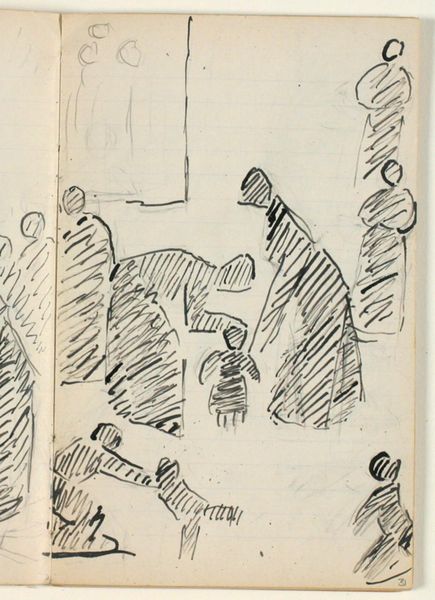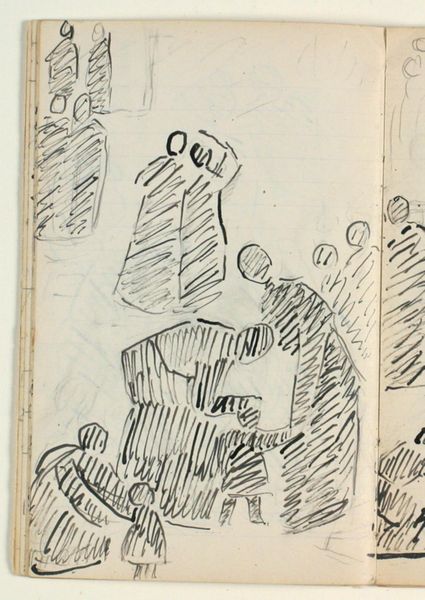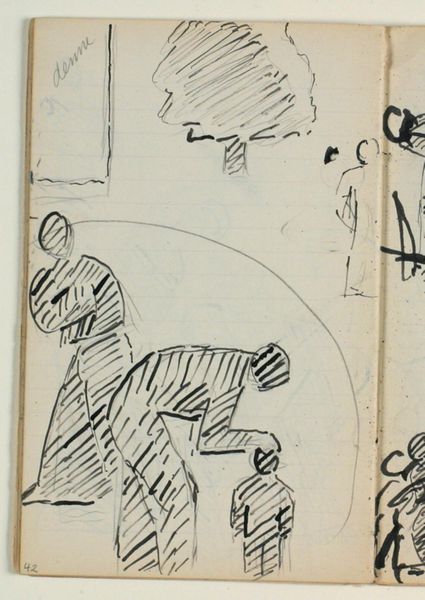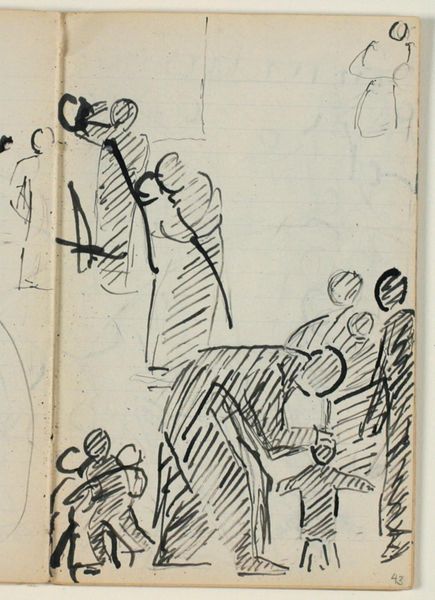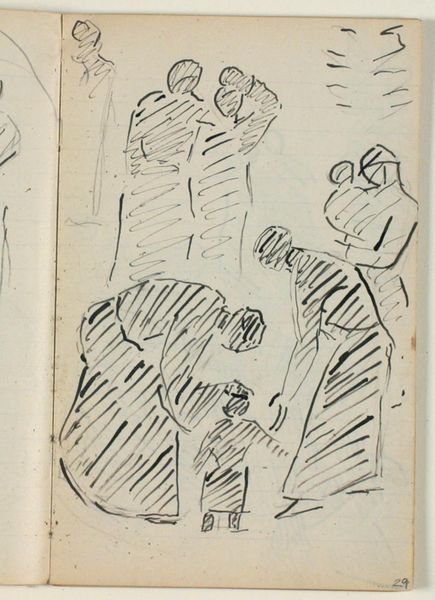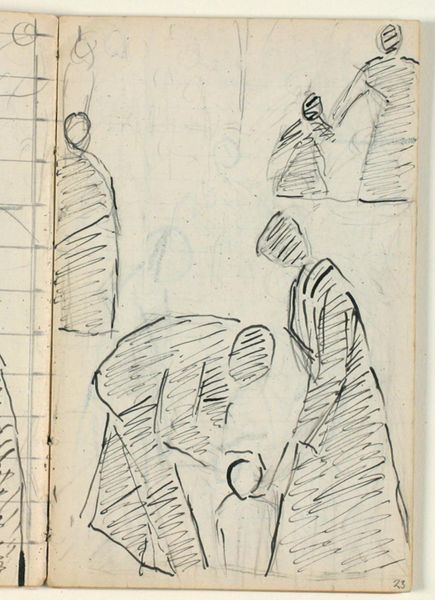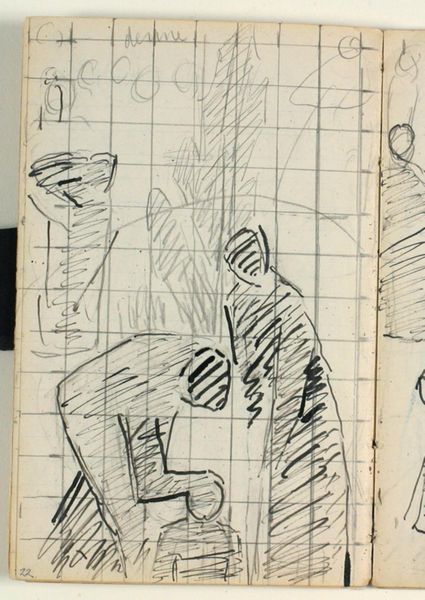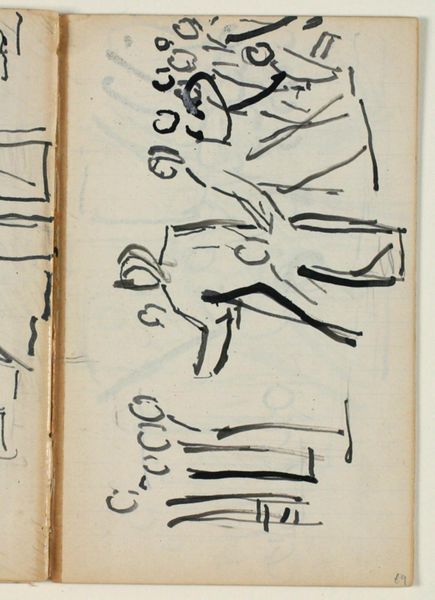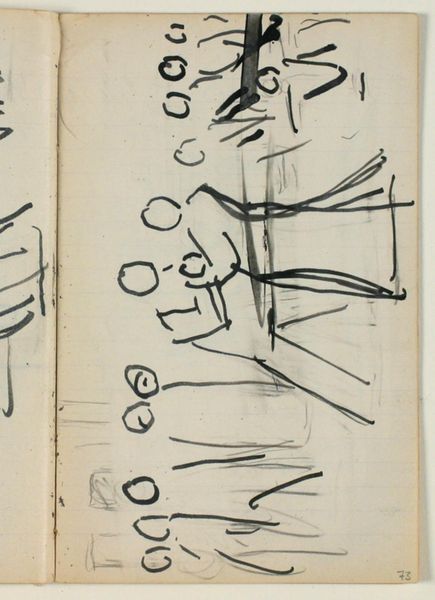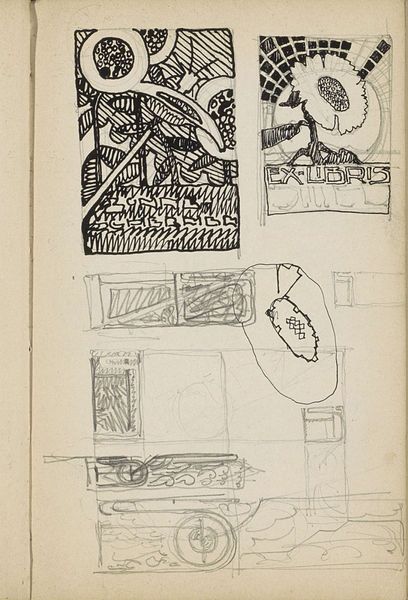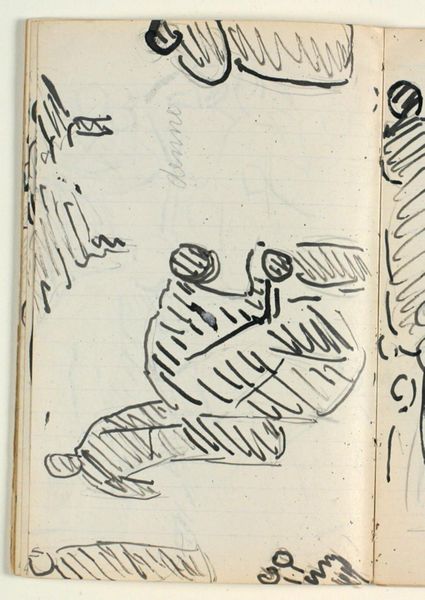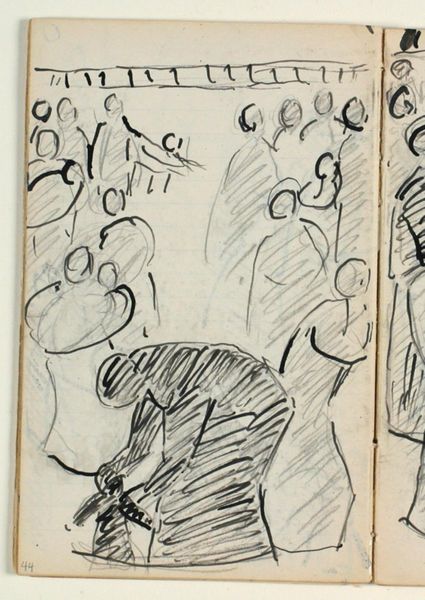
Udkast til "Kristus velsigner de små børn" 1937 - 1938
0:00
0:00
drawing, paper, ink
#
drawing
#
sketch book
#
hand drawn type
#
hand lettering
#
paper
#
personal sketchbook
#
ink
#
idea generation sketch
#
sketchwork
#
geometric
#
pen-ink sketch
#
abstraction
#
sketchbook drawing
#
storyboard and sketchbook work
#
sketchbook art
Dimensions: 178 mm (height) x 111 mm (width) x 5 mm (depth) (monteringsmaal), 178 mm (height) x 111 mm (width) (bladmaal)
Curator: Here we have Niels Larsen Stevns’ sketch, "Udkast til 'Kristus velsigner de sm\u00e5 b\u00f8rn'," created sometime between 1937 and 1938. The media used were ink and drawing on paper. Editor: My first thought is: raw, embryonic, yet powerful in its simplicity. It's fascinating how few lines can suggest so much human presence and implied narrative weight. Curator: Indeed. Given it’s a sketch from a personal sketchbook, likely made in preparation for a larger, perhaps commissioned piece, we can view the artwork as a fascinating look into Stevns’s process of translating complex theological themes into visual form. Look at the use of line, how varied strokes generate form with efficient abstraction. The means are basic – ink, paper – but the potential... immense! Editor: For me, the enduring appeal lies in that central gesture. The abstracted figure extending what seems to be a hand. We can’t ignore the source material - The image resonates profoundly with existing visual languages about generosity, salvation, blessing, and protection across various faith traditions. That repeated imagery evokes empathy, and universal human desires. Curator: Yes, and understanding the social and cultural position of artists in interwar Europe really gives one insight on themes Stevns sought to grapple with: class, nation, religion. Consider paper—increasingly mass-produced, accessible; and the immediacy of ink, allowing Stevns freedom from constraints of scale of laborious, costly media such as painting... These elements are available because labor enabled mass access. Editor: So interesting, it also presents the inverse of that statement, this raw material, those first thoughts have so much lasting potency to the viewers over the years as much of it evokes cultural memory. That gesture can stand alone even outside of this specific religious artwork as almost a symbol for universal care. Curator: Seeing how material means met expressive end through mark making is enlightening. We are getting insight in the most accessible materials used during concept generation. Editor: Exactly, what this has shown me about that raw symbolic gesture from beginning of conception has struck me as much as a more polished icon would.
Comments
No comments
Be the first to comment and join the conversation on the ultimate creative platform.
